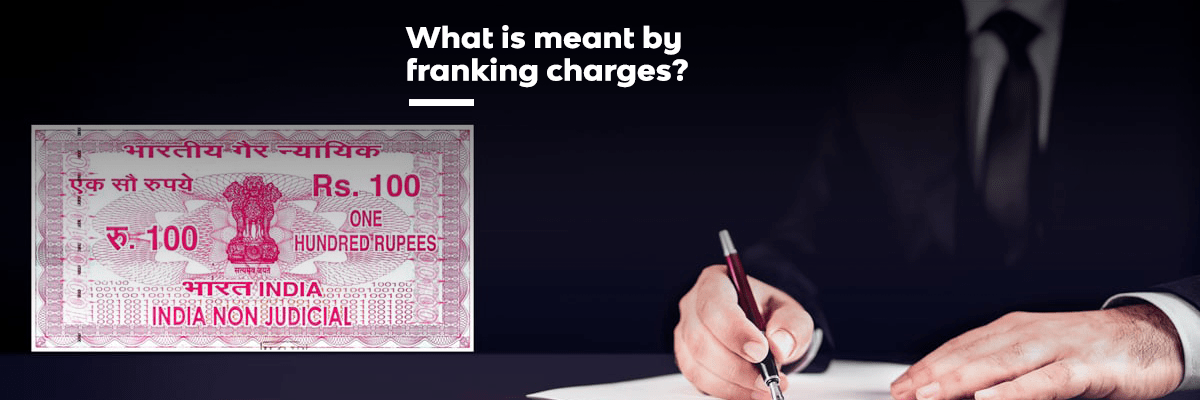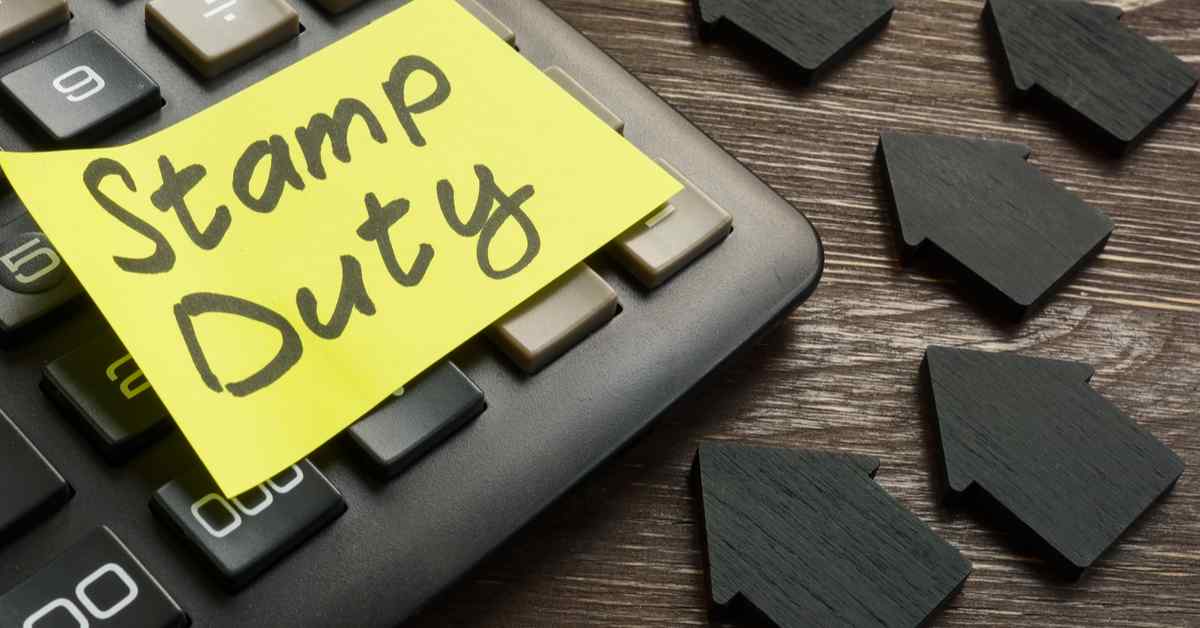Table of Contents
Quality Service Guarantee Or Painting Free

Get a rental agreement with doorstep delivery

Find the BEST deals and get unbelievable DISCOUNTS directly from builders!

5-Star rated painters, premium paints and services at the BEST PRICES!
Loved what you read? Share it with others!


Submit the Form to Unlock the Best Deals Today
Help us assist you better
Check Your Eligibility Instantly

Experience The NoBrokerHood Difference!
Set up a demo for the entire community
All You Need to Know about Revenue Stamps
Table of Contents
Before and after independence, India has been a big consumer of revenue stamps. Revenues were originally produced in the mid-nineteenth century, and they continue to be issued now. To collect taxes or fees, the revenue stamp is utilised. They are used to indicate the payment of a charge on objects or papers, and they resemble postage stamps in appearance. Want to know more about the revenue stamp paper? Read the article to know in detail about the revenue ticket.
What is a Revenue Stamp?
The purpose of revenue stamps (India) is to collect fees or income for the maintenance of courts. The Indian Stamp Act of 1899 is a statute – between 1899 and 2004, it was revised 51 times. If you make a payment of more than Rs. 5000/- to another person, you can demand a stamped receipt with a Re 1/- revenue stamp (1 rupee revenue stamp) under section 30. The Indian Stamp Act 1899, Section 2(23), mandates the affixing of a stamp revenue on any receipt above Rs 5000 (formerly Rs 500) necessary.
The Revenue Stamp 'Receipts' Includes

- acknowledging the receipt of any money, cheque, or promissory note, or any bill of exchange, or
- acknowledging the receipt of any other movable property in satisfaction of a debt, or
- acknowledging the satisfaction or discharge of any debt or demand, or any part of a debt or demand, or
- which signifies or imports any such acknowledgement; and whether it is assigned to the same person or not.
Directorate of Registration and Stamp Revenue
Each city has their own directorate and revenue stamp use. This system acts as the collector of revenue stamps and their charges. Each state has their website for the directorate which makes transactions and records faster and more transparent.
Quality Service Guarantee Or Painting Free

Get a rental agreement with doorstep delivery

Find the BEST deals and get unbelievable DISCOUNTS directly from builders!

5-Star rated painters, premium paints and services at the BEST PRICES!
Where can I get Revenue Stamps?
If you are wondering – where to buy a revenue stamp, then your answer is easy. Revenue Stamps are available at all postal offices. Postal offices have made official comments that the revenue stamps are not available anywhere else, but you can find them in local shops where to get revenue stamps you would have to pay a slightly higher price.
Revenue stamp price in Post Office - 100 paisa
Revenue stamp cost in local shops - Re. 1
Rent Receipt with Revenue Stamp

If you are wondering ‘is a revenue stamp required for a rent receipt,’ then the answer is yes. If you live on rent and your wage package includes a home rent allowance (HRA), according to revenue stamp rules, you will need to provide rent receipts as proof of expense.
To claim the tax deductions available to tenants under the Indian Income Tax (IT) rules, you must produce confirmation of the amount paid to your landlord under the rental agreement to your employer. Rent receipts serve as documentary proof that you deducted a set amount from your salary to cover the cost of renting an apartment, and they are crucial for claiming HRA-related tax benefits.
Before the conclusion of the fiscal year, your employer will request that you submit your rent receipt online with revenue or fiscal stamps. You must obtain paying invoices from your landlord and submit them on a one-rupee revenue stamp to your employer to claim HRA deductions, even if you pay your rent via credit card or other online money transfer methods.
If the monthly rent exceeds Rs 3,000, the renter must disclose the rent receipts with his employer to claim HRA exemption. They do not need to bother about revenue stamp on rent receipt if their monthly rent is less. It’s also important to note that you don’t have to submit the rent agreement in order to claim the HRA benefit because the tax system doesn’t require it. The tenancy will not be valid, however, until the landlord and the renter have signed and executed a rent agreement.
The price of a revenue stamp used on rent receipts is just ₹1. These are easily available at your local post office. However, small shops and some online portals also claim to sell these revenue stamps. These online revenue stamps will cost you more than the one rupee post office revenue stamps. You also run the risk of ending up with a fake or old revenue stamps for rent receipt if bought from such unreliable sources.
Who is Eligible for HRA?
If you live in rental housing and HRA is included in your pay, you can claim deductions. If you live in rental housing and are a salaried individual, you can take advantage of HRA exemptions to save money on taxes under Section 10 (13A) of the IT Act. HRA tax deduction is available to self-employed professionals under Section 80GG of the statute.
Rent Receipts and their Benefits

A rent receipt is a record of a tenant's payment of rent to their landlord. When the landlord collects the rent from the renter, he gives the tenant a rent receipt. If you are eligible, it can be used for legal concerns or tax benefits. Before the end of the financial year, you must submit vital documents to your employers, such as rent receipts and a rent agreement, in order to claim House Rent Allowance (HRA). If the rent exceeds Rs 1 lakh per annum, the landlord's PAN number is also necessary.
What are the Components of a filled Rent Receipt with a Revenue Stamp?
After generating a rent receipt online with a revenue stamp, check the receipt. To remain valid, rent receipts must include the following information:
- The landlord's name
- The tenant's name
- The property's address
- Term of Rental
- Amount of rent
- Payment method for rent (cash, cheque, online payment)
- The tenant's signature
- The landlord's signature
- If the cash payment is greater than Rs 5,000 per receipt, a revenue stamp required for cash payment is mandatory.
- If your yearly rent payment exceeds Rs 1 lakh or Rs 8,300 per month, you must provide the landlord's PAN.
Rent Receipt Format with Revenue Stamp
The photo below is an accurate representation of the rent receipt.

Revenue stamps have stayed in India for a long time and have increased to grow relevant. Revenue stamps are required for rent receipts, and all its details have been explained above. If you have more questions about stamp revenue, drop a comment here, and our team at NoBroker will get back to you promptly. Or head to NoBroker Forum to have all your questions answered. For any legal queries please contact our legal team by clicking the link below.
FAQs
Ans. Latest revenue stamps are easily available at your local shops and revenue stamp post offices. They do not cost more than Re 1.
Ans. If payment in cash exceeds Rs. 5000, a stamp must be placed on the receipt. A rent receipt with a revenue stamp becomes a legal document, indicating that payment has been received by the recipient and paid by the payer.
Ans. If you are not eligible for House Rent Allowance and have not claimed any expense for rent paid under any other provision of the income tax act, you can deduct the amount paid under Section 80GG.
Ans. If the landlord does not have a PAN card and charges more than Rs 1 lakh in annual rent, he must produce a written declaration along with Form 60. These documents can subsequently be submitted to the tenant's employer in order to receive HRA deductions
Ans. You may not be eligible to claim HRA exemption if your landlord does not give you a rent receipt. Before renting an apartment, make sure you and your landlord agree to a revenue stamp on the rent receipt.
Recommended Reading

All You Need to Know About Property Disputes and How to Avoid Them
January 16, 2025
5489+ views

Freehold Property and How It Can Affect Your Property Purchase in 2025
January 15, 2025
15598+ views

Legal Documents You Need To Buy And Sell Property: Essential Guide
January 15, 2025
11096+ views

Land Acquisition Act 2013: Balancing Demand and Compensation
January 15, 2025
4163+ views

Sale Deed: Your Guide to Property Ownership
December 31, 2024
13260+ views
Loved what you read? Share it with others!
Most Viewed Articles

Franking Charges Explained: Meaning and Benefits
December 31, 2024
1046628+ views

What is the BBMP E-Khata Registration process for property owners in Bangalore, Karnataka in 2025?
January 16, 2025
81778+ views

Supreme Court Verdict on Society Maintenance Charges
December 17, 2024
71766+ views

All You Need to Know about Revenue Stamps
December 17, 2024
60364+ views

Stamp Duty and Registration Charges in Bangalore in 2025
January 23, 2025
52663+ views
Recent blogs in
Nagpur Property Tax: Online Bill Payment, Receipt Download and Tax Calculator in 2025
January 28, 2025 by Nivriti Saha
Stamp Duty and Property Registration Charges in Mumbai 2025
January 23, 2025 by Kruthi
What are the current Stamp Duty and Property Registration Charges in Karnataka for 2025?
January 23, 2025 by Prakhar Sushant
Stamp Duty and Registration Charges in Bangalore in 2025
January 23, 2025 by Vivek Mishra



Join the conversation!